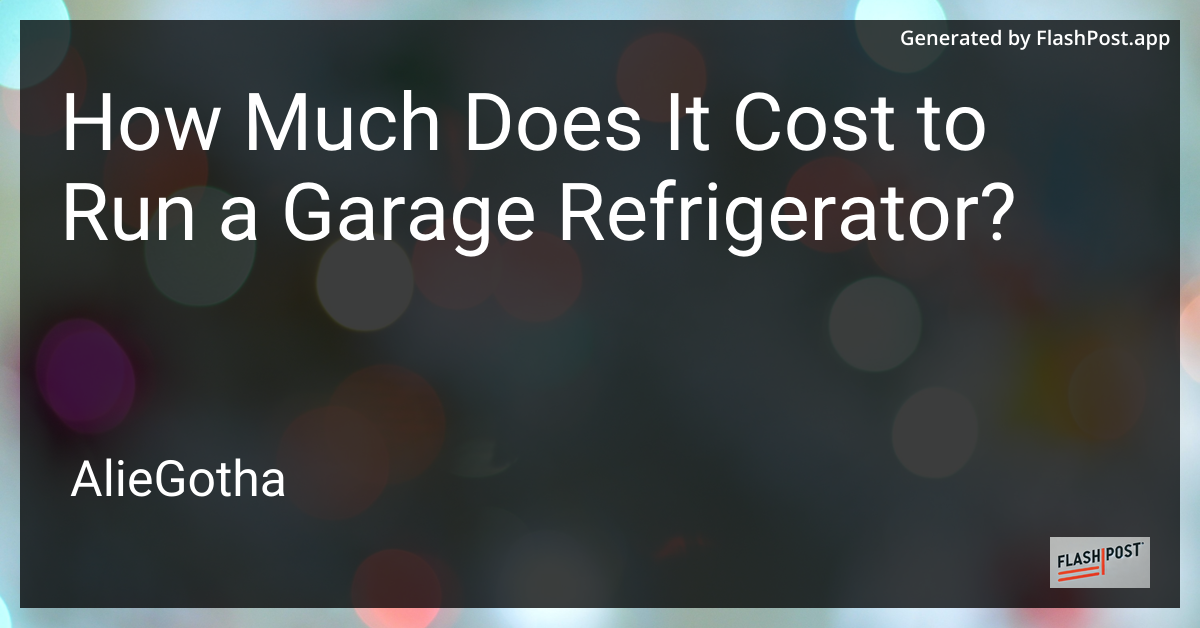

How Much Does It Cost to Run a Garage Refrigerator?
Running a garage refrigerator can be a convenient way to store extra groceries or beverages, but it comes with its own set of costs. Understanding these expenses can help you make an informed decision about whether a garage refrigerator is a worthwhile investment for your household.
Understanding Energy Consumption
Most standard refrigerators consume energy ranging from 100 to 800 watts depending on their size, age, and efficiency. Garage refrigerators are often older models that aren’t as energy-efficient as contemporary units. These older units can consume more power, particularly when operating in an uninsulated garage where temperatures can fluctuate drastically.
Factors Influencing Cost:
-
Energy Efficiency: Energy Star-rated refrigerators tend to be more efficient than older models. If your garage refrigerator is over ten years old, it might consume significantly more electricity.
-
Ambient Temperature: Garages often lack climate control, which means your refrigerator may work harder to maintain a stable temperature, especially in extreme weather conditions. This adds to energy consumption.
-
Refrigerator Size: Larger refrigerators use more power. If your garage refrigerator is bigger than necessary, you might be wasting electricity.
-
Frequency of Use: The more frequently the refrigerator door is opened, the harder the unit has to work to restore its internal temperature, increasing energy use.
Estimating the Cost
To find out how much your garage refrigerator costs to run, you need to calculate its energy consumption. Follow these steps:
-
Find the Wattage: Check the manufacturer’s label on the refrigerator to find its wattage. If it’s listed in amps, multiply by the voltage (usually 120V) to find watts.
-
Calculate Daily Energy Use: Multiply the wattage by the hours per day you estimate the refrigerator runs. For continuous operation, this could be 24 hours.
-
Annual Cost: Convert the daily kilowatt-hours (kWh) into an annual total by multiplying by 365. Multiply this figure by your local energy rate (cents per kWh) to determine the yearly cost.
For example, if your garage refrigerator uses 200 watts and runs continuously, that’s 200 watts x 24 hours = 4,800 watt-hours, or 4.8 kWh daily. At an energy rate of $0.12 per kWh, the cost would be 4.8 kWh x $0.12 = $0.576 per day or approximately $210 per year.
Reducing Costs
-
Upgrade Your Unit: If you have a very old model, consider replacing it with a newer, Energy Star-certified refrigerator to reduce power usage.
-
Proper Placement: Ensure your refrigerator is not in direct sunlight and has adequate ventilation space to function efficiently.
-
Insulate the Garage: Improved insulation can help moderate temperatures in the garage, easing the strain on the refrigerator.
Troubleshooting Tips
If your garage refrigerator isn’t running efficiently, it may require some troubleshooting. For useful insights on diagnosing these issues, visit this refrigerator repair guide.
Consider Alternatives
If your needs include storing beverages such as wine, exploring options like dedicated wine refrigerators might be worthwhile. Learn how to manage their operation through wine refrigerator controls and discover the ideal storage with this wine refrigerator guide.
In conclusion, understanding how much it costs to run a garage refrigerator involves evaluating several factors, from the unit’s efficiency to how it’s used. By considering these aspects, you can better manage your utility expenses while enjoying the convenience of additional refrigerated storage space.
